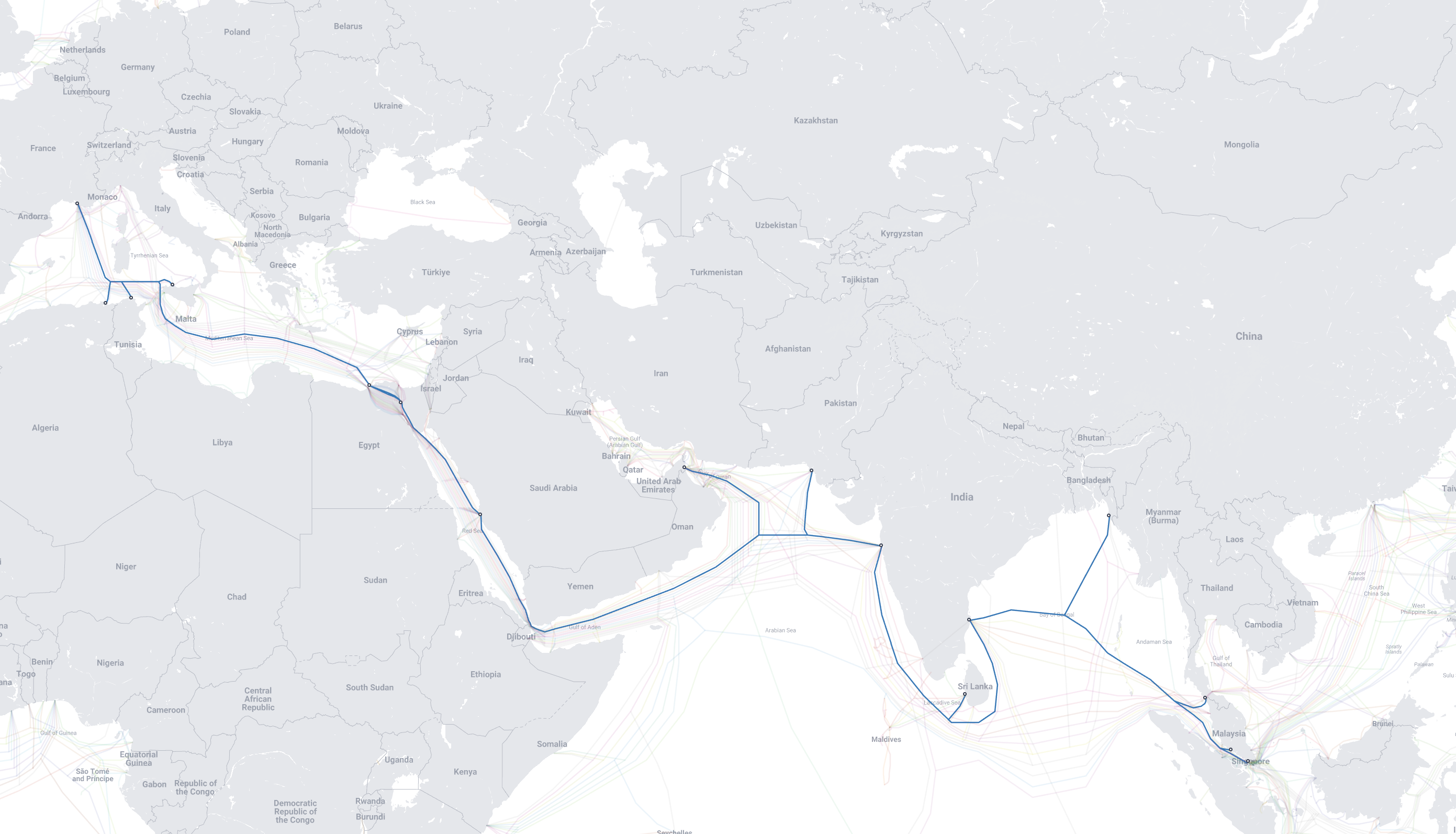AS9498

Submarine cable cuts at Jeddah impact connectivity in the Indian subcontinent
Airtel routing Europe to India via the US
Bharti Airtel starts peering in Russia
Can one reach entire Indian routing table via NIXI?
Jio-Airtel PNI up in Delhi NCR!
I visited Delhi earlier today and noticed latency from my phone on Jio 5G to my home (on an ISP behind Airtel) was just 20ms. It varied a bit (as one would expect on a wireless radio network) but 20ms is special because until now it was at least 80-90ms. After all, Jio and Airtel were not connected in Delhi NCR until now. There were sometimes jokes about them being connected at NIXI Noida but that never pushed any traffic because NIXI injects its route server AS24029 in the AS_PATH and while their direct PNIs (i.e Private Network Interconnect) in Mumbai & Chennai would have a direct (short) AS_PATH.
Why Indian internet traffic routes from outside of India?
After my last post about home networking, I am jumping back into global routing. More specifically how Indian traffic is hitting the globe when it does not need to. This is an old discussion across senior management folks in telcos, policymakers, and more. It’s about “Does Indian internet traffic routes from outside of India?” and if the answer is yes then “Why?” and “How much?”
It became a hot topic, especially after the Snowden leaks. There was even an advisory back in 2018 from Deputy National Security Advisor to ensure Indian internet traffic stays local (news here). Over time this has come up a few dozen times in my discussion with senior members from the Indian ISP community, individuals, and even latency-sensitive gamers. So I am going to document some of that part here. I am going to put whatever can be verified publically and going to avoid putting any private discussions I had with friends in these respective networks. The data specially traceroutes will have measurement IDs from RIPE Atlas so they can be independently verified by other network engineers.
Indian IPv6 deployment
I had calls with a couple of friends over this week and somehow discussion IPv6 deployment came up. “How much has been IPv6 deployment in India now in 2020” is a very interesting question. It’s often added with - “how much of my traffic will flow over IPv6 once it is enabled”?
Game of numbers
There is a drastic difference in IPv6 deployment depending on which statistic we are looking at here in India. There can be a bunch of factors based on which we can try to judge IPv6 deployment:
VoWifi experience on Jio
Since last week of Nov 2019, I am having serious issues with Airtel at my home. Somehow 4G signal SNR is very poor and most of the calls just fail on that. Airtel support just mentioned that they are putting a new site in my area in Jan 2020 but fail to explain why suddenly it went so bad. I can imagine that support team staff does not have visibility to network in real-time and likely it would be an issue with the 4G antenna on one or more towers. 2G signal was good but latency was extremely high to connect call plus calls still failed regardless (maybe due to high strain on 2G).
Tata - Airtel domestic peering IRR filtering and OpenDNS latency!
Last month I noticed quite high latency with Cisco’s OpenDNS from my home fibre connection. The provider at home is IAXN (AS134316) which is peering with content folks in Delhi besides transit from Airtel.
ping -c 5 208.67.222.222
PING 208.67.222.222 (208.67.222.222) 56(84) bytes of data.
64 bytes from 208.67.222.222: icmp_seq=1 ttl=51 time=103 ms
64 bytes from 208.67.222.222: icmp_seq=2 ttl=51 time=103 ms
64 bytes from 208.67.222.222: icmp_seq=3 ttl=51 time=103 ms
64 bytes from 208.67.222.222: icmp_seq=4 ttl=51 time=103 ms
64 bytes from 208.67.222.222: icmp_seq=5 ttl=51 time=103 ms
--- 208.67.222.222 ping statistics ---
5 packets transmitted, 5 received, 0% packet loss, time 4005ms
rtt min/avg/max/mdev = 103.377/103.593/103.992/0.418 ms
This is bit on the higher side as from Haryana to Mumbai (OpenDNS locations list here). My ISP is backhauling from Faridabad which is probably 6-8ms away from my city and 2-3ms further to Delhi and from there to Mumbai around 30ms. Thus latency should be around ~40-45ms.